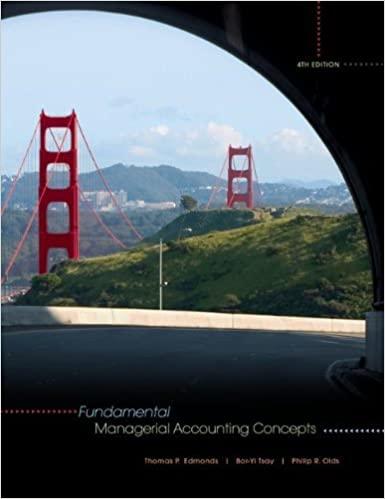Business Application Case Comprehensive job-order costing problem This problem covers concepts that were presented in Chapters 11
Question:
Business Application Case Comprehensive job-order costing problem This problem covers concepts that were presented in Chapters 11 and 12 concerning job-order costing systems.
Custom Automobile Restoration Shop (CARS) is a small shop dedicated to high-quality restorations of vintage cars. Although it will restore an automobile that a customer already owns, usually the shop buys an old vehicle, restores it, and then sells it in a private-party sale or at a classic-car auction. The shop has been in existence for 10 years, but for the sake of simplicity, assume it has no beginning inventories for 2009. Five automobile restoration projects were worked on during 2009.
By the end of the year, four of these projects were completed and three of these four were sold.
The following selected data are from CARS’ 2009 budget:
The following information relates to production events during 2009.
1. Raw materials were purchased for $166,500.
2. Materials used in production totaled $161,000; $12,200 of these were considered indirect materials costs. The remaining $148,800 of direct materials costs related to individual restoration jobs as follows:
3. Labor costs incurred for production totaled $142,700. The workers are highly skilled craftsmen who require little supervision. Therefore all of these were considered direct labor costs and related to individual restoration jobs as follows:
4. Paid factory rent of $22,000.
5. Recorded depreciation on factory equipment of $9,500.
6. Made $3,500 of payments to outside vendors for maintenance of factory equipment.
7. Paid factory utilities costs of $2,600.
8. Applied manufacturing overhead using a predetermined rate of $13.50 per machine hour. The 3,750 machine hours that were used relate to each job as follows:
9. Completed all restoration jobs except 705 and transferred the projects to finished goods.
10. Sold three jobs for the following amounts:
11. Closed the Manufacturing Overhead account to transfer any overapplied or underapplied overhead to the Cost of Goods Sold account.
Required
a. Assume CARS had used direct labor hours (versus machine hours) as its cost driver. Compute its predetermined overhead rate.
b. Determine the ending balance in Raw Materials Inventory.
c. Determine the ending balance in Finished Goods Inventory.
d. Determine the ending balance in Work in Process Inventory.
e. Determine the costs of goods manufactured.
f. Determine the amount of cost of goods sold.
g. Determine the amount of gross margin that was earned on Jobs 701, 702, and 703.
h. Determine the amount of overapplied or underapplied overhead that existed at the end of the year.
Hint: Though not required, you might find it helpful to organize the data using a horizontal financial statements model, although it will still be necessary to prepare a job cost sheet for each individual job.
Step by Step Answer:

Fundamental Managerial Accounting Concepts
ISBN: 9780073526799
4th Edition
Authors: Thomas Edmonds, Bor-Yi Tsay, Philip Olds





